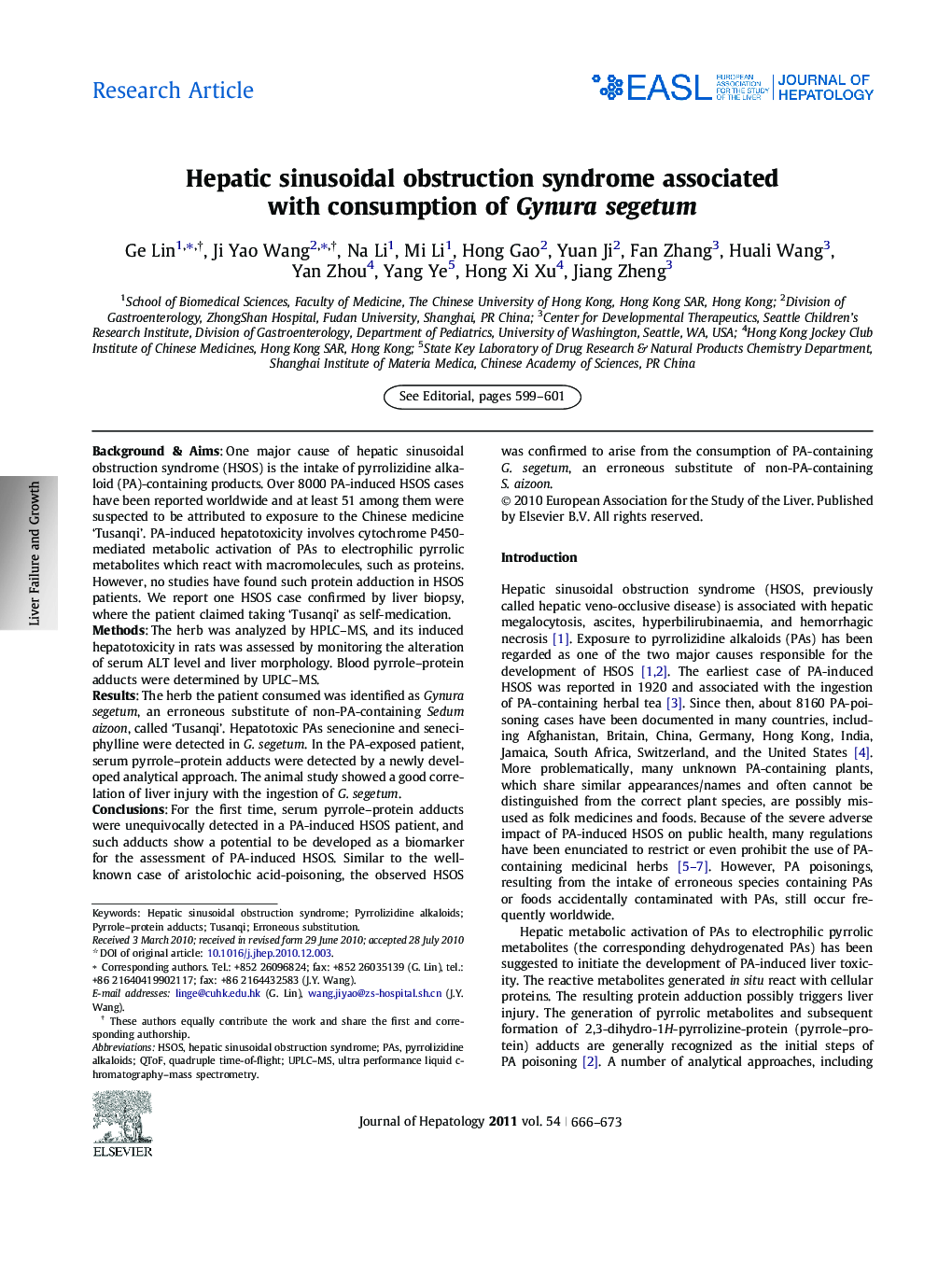| کد مقاله | کد نشریه | سال انتشار | مقاله انگلیسی | نسخه تمام متن |
|---|---|---|---|---|
| 6108551 | 1211189 | 2011 | 8 صفحه PDF | دانلود رایگان |

Background & AimsOne major cause of hepatic sinusoidal obstruction syndrome (HSOS) is the intake of pyrrolizidine alkaloid (PA)-containing products. Over 8000 PA-induced HSOS cases have been reported worldwide and at least 51 among them were suspected to be attributed to exposure to the Chinese medicine 'Tusanqi'. PA-induced hepatotoxicity involves cytochrome P450-mediated metabolic activation of PAs to electrophilic pyrrolic metabolites which react with macromolecules, such as proteins. However, no studies have found such protein adduction in HSOS patients. We report one HSOS case confirmed by liver biopsy, where the patient claimed taking 'Tusanqi' as self-medication.MethodsThe herb was analyzed by HPLC-MS, and its induced hepatotoxicity in rats was assessed by monitoring the alteration of serum ALT level and liver morphology. Blood pyrrole-protein adducts were determined by UPLC-MS.ResultsThe herb the patient consumed was identified as Gynura segetum, an erroneous substitute of non-PA-containing Sedum aizoon, called 'Tusanqi'. Hepatotoxic PAs senecionine and seneciphylline were detected in G. segetum. In the PA-exposed patient, serum pyrrole-protein adducts were detected by a newly developed analytical approach. The animal study showed a good correlation of liver injury with the ingestion of G. segetum.ConclusionsFor the first time, serum pyrrole-protein adducts were unequivocally detected in a PA-induced HSOS patient, and such adducts show a potential to be developed as a biomarker for the assessment of PA-induced HSOS. Similar to the well-known case of aristolochic acid-poisoning, the observed HSOS was confirmed to arise from the consumption of PA-containing G. segetum, an erroneous substitute of non-PA-containing S. aizoon.
Journal: Journal of Hepatology - Volume 54, Issue 4, April 2011, Pages 666-673